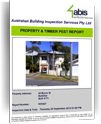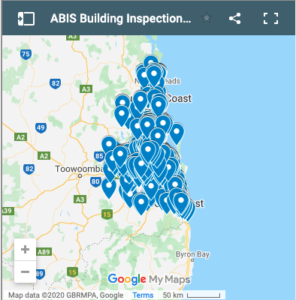2.4.2 Wall structure
2.4.2.1 Masonry – foundation related cracking
- Diagonal cracks Most commonly occurring at the corners of buildings, the cracking will tend to be wider at the top of a wall, while narrowing down to the bottom. However, in straight walls with no openings, there is a tendency for the cracks to occur at a point a third of the distance along the wall.
- Diagonally stepped cracking Localised cracking which forms in masonry walls in the vicinity of existing trees and shrubs. The cracking is often diagonally stepped and will tend to form around openings or other points of weakness in the building. In extreme cases the wall may rotate and twist considerably.
- Diagonally stepped cracking Localised cracking forming in masonry walls in the vicinity of recently removed trees and shrubs. The cracking is often diagonally stepped and will tend to form around openings or other points of weakness in the building. In extreme cases the wall may rotate and twist considerably.
- Stepped or vertical cracking The formation of the cracks is either stepped cracking around openings or vertical cracking in the wall, it is unusual for both types to occur in the one length of wall. Cracks are usually wider at the top and narrow towards the bottom.
- Diagonal and vertical cracks Diagonal cracks forming around openings usually wider at the top and narrow towards the bottom, and vertical cracking.
- Irregular cracking en a zig-zag pattern Irregular cracking occurring immediately after a sudden vibration or over a long period of continual vibration. Old cracks open, allowing dust and filling to drop out, and in more severe cases new cracks will form, often in an irregular zig-zag pattern
- Cogged or vertical cracks Cogged or vertical cracks appearing in masonry walls where an addition has been keyed into the existing structure. Where there has been a rotational effect, stepped diagonal cracks may occur, especially around openings.
- Horizontal cracking Cracks forming in a masonry wall along the side of a house parallel to a row of trees.
- General cracking Localised or wide spread cracking caused by shear failure of the foundations. Shear failure occurs where the foundation soil is forced from under a footing. Where shear failure does occur it can cause serious displacement of the footings, and even the whole building.
- Genera! cracking External walls tend to rotate outwards at the top causing general cracking, especially around openings. Internal partition walls may develop cracks which will open up at the top of the wall and narrow down at the bottom. A slight bulging of the floor may occur as the supports rise.
- General cracking External walls tending to rotate inwards at the top causing general cracking. Internal walls may develop cracks that open at the bottom of the wall and narrow towards the top. The effect on the floor is that the internal supports drop below the bottom of the bearers and the floor becomes springy and sags slightly.
- General cracking Cracks forming around a heat source (e.g. a furnace) and in extreme cases deflection of the floor can occur.
- General cracking Cracks forming in areas associated with periodic or continual dampness.
2.4.2.2 Masonry – cracking not related to foundation movement
- Stepped or horizontal cracking Cracks forming in masonry walls around a piece of metal originating at the point of embedment. Cracking occurs as a result of rust and scale building up on corroded lintels, arch bars, bolts etc. and displacing the surrounding masonry.
- Horizontal cracking Cracking along the internal face of the external masonry walls, often at the level where the external leaf of a cavity wall terminates. The most common cause of this type of movement is spreading of a pitched roof.
- Horizontal cracking Cracks forming at the base of masonry walls built on suspended concrete floors. Cracking is caused by excessive deflection of the floor.
2.4.2.3 External render and stucco
- Full depth cracks Cracks penetrating the external render or stucco finish and its backing material. Full depth cracking occurs where the backing material has fractured_ The type of failure will be indicated by the pattern and fluctuations of the cracking. Frequently it is associated with differential movements of masonry walls on expansive clay soils, or with some type of foundation failure. Cracking problems not associated with foundation movement are frequently caused by the corrosion of embedded metal, sulphate attack, and insufficient or incorrect movement control joints. Sulphate attack is distinguished by a characteristic horizontal cracking pattern.
2.4.2.4 Internal solid plaster
- Major failure Failure of solid plaster is associated with movement of the backing material causing cracking and loss of adhesion TN= problems of backing movement are similar to those in external render and stucco.
2.4.2.5 Internal lath and plaster, plaster sheet, and plasterboard
- Major cracking Cracking in internal plaster finishes is usually caused by movement occurring within the framing to which the plaster is fixed.




